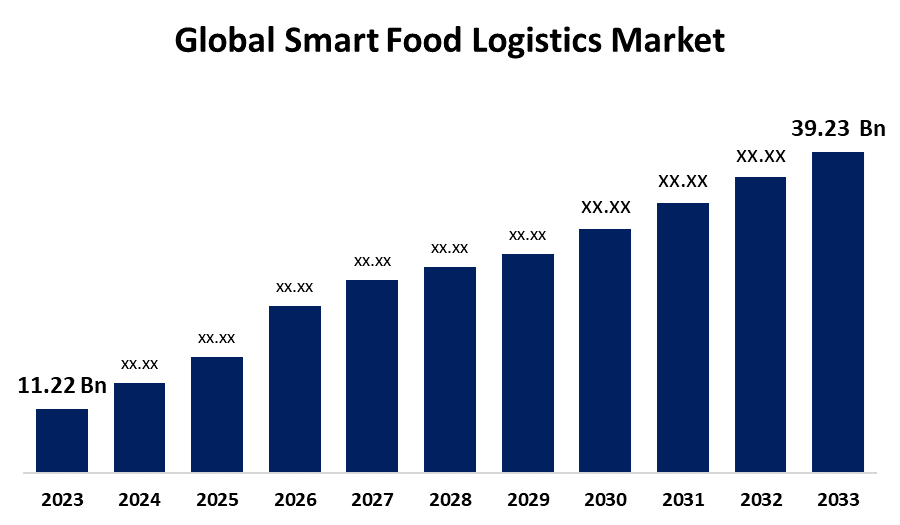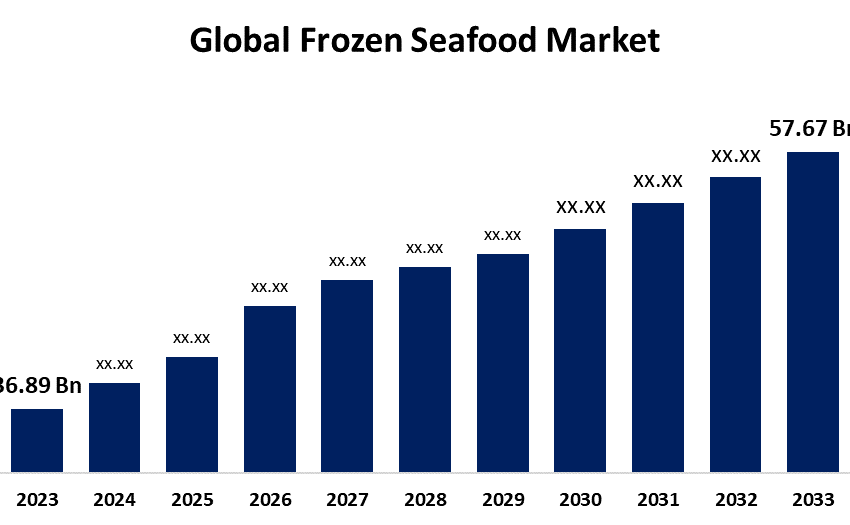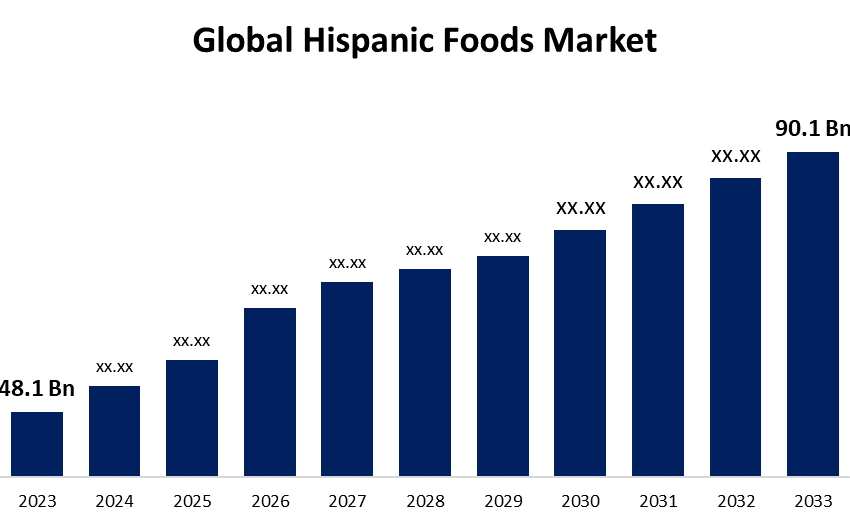Technological Innovations Shaping the Global Smart Food Logistics Market
According to a research report published by Spherical Insights & Consulting, the Global Smart Food Logistics Market Size Expected to Grow from USD 11.22 Billion in 2023 to USD 39.23 Billion by 2033, at a CAGR of 13.33% during the forecast period 2023-2033.
Get a Sample PDF Brochure: https://www.sphericalinsights.com/request-sample/7127
Smart food logistics is an area of food supply chains that is concerned with food producers, vendors, and other logistical organizations. Its main role is to assist with organizing the shipment of products. The intelligent food supply chains would allow maximal point production and distribution of food that would boost growth in the smart food logistics market as a whole. Integration of automation technologies, such as robotics and AI-based systems, into operations like harvesting, sorting, packing, and distribution, has resulted in the reduction of labor costs and efficiency alterations. This result will increase the smart food logistics market growth. Increasing costs associated with maintaining logistics capacity and cold chain capabilities, and adding several middlemen for transporting food products, led to a growing focus on efficiency in all areas. Rising consumer concern about the environment requires an effective strategy to present profitability through reduced carbon footprints. Food supply chain management lacks transparency so both vendors and producers are clueless as to what caused the price rise and supply shortage. Global supply chains have become attractive hunting grounds, given their integrated and often lacking safety measures.
Browse key industry insights spread across 345 pages with 100 Market data tables and figures & charts from the report on the Global Smart Food Logistics Market Size, Share, and COVID-19 Impact Analysis, By Component (Hardware and Software), By Technology (Cold Chain Monitoring, Asset Tracking, Fleet Management, and Transportation Management System), and By Region (North America, Europe, Asia-Pacific, Latin America, Middle East, and Africa), Analysis and Forecast 2023 – 2033.
Buy Now Full Report: https://www.sphericalinsights.com/checkout/7127
The software segment is expected to hold the majority share of the market over the forecast period.
Based on the components, the global smart food logistics market is categorized into hardware and software. Among these, the software segment is expected to hold the majority share of the market over the forecast period. The growth is driven due to software adoption being more flexible and, in many cases, mass-customizing the products and services of businesses. As the number of data analysis and management specialists grows, the supply lines could transform into a service. New IoT-enabled transportation management software has emerged as a game-changer in future segment growth.
The cold chain monitoring segment has the largest share of the market over the forecast period.
Based on the technology, the global smart food logistics market is categorized into cold chain monitoring, asset tracking, fleet management, and transportation management systems. Among these, the cold chain monitoring segment has the largest share of the market over the forecast period. The segmental growth is due to means of managing a temperature-regulated supply chain usually used to help ensure and extend the long shelf life of products that require long distances of travel. Cold chain monitoring is the process of regulating and tracking the temperature and humidity of temperature-sensitive commodities throughout storage and distribution. A cold chain monitoring system sends real-time temperature data from commodities to a centralized software platform.
Inquire Before Buying This Research Report: https://www.sphericalinsights.com/inquiry-before-buying/7127
North America is projected to hold the largest share of the global Smart food logistics market over the forecast period.
North America is projected to hold the largest share of the global smart food logistics market over the forecast period. In North America, the AI in the supply chain sector is thriving owing to developed economies like the United States and Canada, which improve existing supply chain solutions and adopt advanced technologies. In addition, major players operate in the region. Moreover, the government’s push towards applications of technology to manage waste in supply chains and growing concern about waste management and optimization of resources are other factors helping to bolster growth for the market in the region.
Asia Pacific is expected to grow at the fastest CAGR of the global smart food logistics market during the forecast period. Initiatives of the government for strengthening the logistics system of the country are growing the market. The federal government has announced the creation and promotion of a modern logistics system to greatly support a new development pattern.
Competitive Analysis:
The report offers the appropriate analysis of the key organizations/companies involved within the global smart food logistics market along with a comparative evaluation primarily based on their product offering, business overviews, geographic presence, enterprise strategies, segment market share, and SWOT analysis. The report also provides an elaborative analysis focusing on the current news and developments of the companies, which includes product development, innovations, joint ventures, partnerships, mergers & acquisitions, strategic alliances, and others. This allows for the evaluation of the overall competition within the market. Major vendors in the global smart food logistics market are Kii Corporation, Hacobu Co., Ltd., Teletrac Navma, Monnit Corporation, Controlant, Samsara Networks, Inc., Seaos, Nippon Express Co. Ltd, YUSEN LOGISTICS CO. LTD, Orbcomm, Sensitech, Berlinger & Co. AG, Geotab Inc, and Others.
Key Target Audience
- Market Players
- Investors
- End-users
- Government Authorities
- Consulting and Research Firm
- Venture capitalists
- Value-Added Resellers (VARs)
Key Market Development
- In July 2024, Dubai created the world’s largest food logistics center, thereby adding to the book of food security for the entire UAE. The center boosts thus all UAE initiatives in the area of food security and contributes toward developing the whole food value chain in the local as well as international market.
Market Segment
This study forecasts revenue at global, regional, and country levels from 2020 to 2033. Spherical Insights has segmented the global smart food logistics market based on the below-mentioned segments:
Global Smart Food Logistics Market, By Component
- Hardware
- Software
Global Smart Food Logistics Market, By Technology
- Cold Chain Monitoring
- Asset Tracking
- Fleet Management
- Transportation Management System
Global Smart Food Logistics Market, By Regional
- North America
- US
- Canada
- Mexico
- Europe
- Germany
- UK
- France
- Italy
- Spain
- Russia
- Rest of Europe
- Asia Pacific
- China
- Japan
- India
- South Korea
- Australia
- Rest of Asia Pacific
- South America
- Brazil
- Argentina
- Rest of South America
- Middle East & Africa
- UAE
- Saudi Arabia
- Qatar
- South Africa
- Rest of the Middle East & Africa
Browser Related URL
Japan Plant-Based Milk Market Size, Share, and COVID-19 Impact Analysis, By Product (Almond Milk, Soy Milk, Coconut Milk, Oat Milk, and Rice Milk), By Flavor (Flavored and Non-Flavored), and Japan Plant-Based Milk Market Insights, Industry Trend, Forecasts to 2033
Global Snack Food Packaging Market Size, Share, and COVID-19 Impact Analysis, By Material (Plastic, Paper, Metal, Glass, and Others), By Application (Wafers, Nuts & Dry Fruits, Baby Food, Ready-to-Eat Food, and Others), and By Region (North America, Europe, Asia-Pacific, Latin America, Middle East, and Africa), Analysis and Forecast 2023 – 2033
Singapore Edible Oils Market Size, Share, and COVID-19 Impact Analysis, By Product Type (Palm Oil, Soybean Oil, Sunflower Oil, Rapeseed Oil, Olive Oil, and Others), By Packaging Type (Pouches, Jars, Cans, Bottles, and Others), By End Use (Domestic, Industrial, and Food Service), and Singapore Edible Oils Market Insights, Industry Trend, Forecasts to 2033
Canada Plant-based Food and Beverages Market Size, Share, and COVID-19 Impact Analysis, By Product Type (Plant-Based Milk and Derivatives, Plant-Based Milk, Plant-Based Meat, Bakery and Confectionery, Sweet and Savory Snacks, Plant-Based Juices, and RTD Tea and Coffee), By Source (Soy, Wheat, Pea, Coconut, Almond, and Cashew), By Category (Conventional and Organic), By Distribution Channel (Store and Non-Store), and Canada Plant-based Food and Beverages Market Insights, Industry Trend, Forecasts to 2033
About the Spherical Insights & Consulting
Spherical Insights & Consulting is a market research and consulting firm which provides actionable market research study, quantitative forecasting and trends analysis provides forward-looking insight especially designed for decision makers and aids ROI.
Which is catering to different industry such as financial sectors, industrial sectors, government organizations, universities, non-profits and corporations. The company’s mission is to work with businesses to achieve business objectives and maintain strategic improvements.
CONTACT US:
For More Information on Your Target Market, Please Contact Us Below:
Phone: +1 303 800 4326 (the U.S.)
Phone: +91 90289 24100 (APAC)
Email: inquiry@sphericalinsights.com, sales@sphericalinsights.com
Contact Us: https://www.sphericalinsights.com/contact-us


